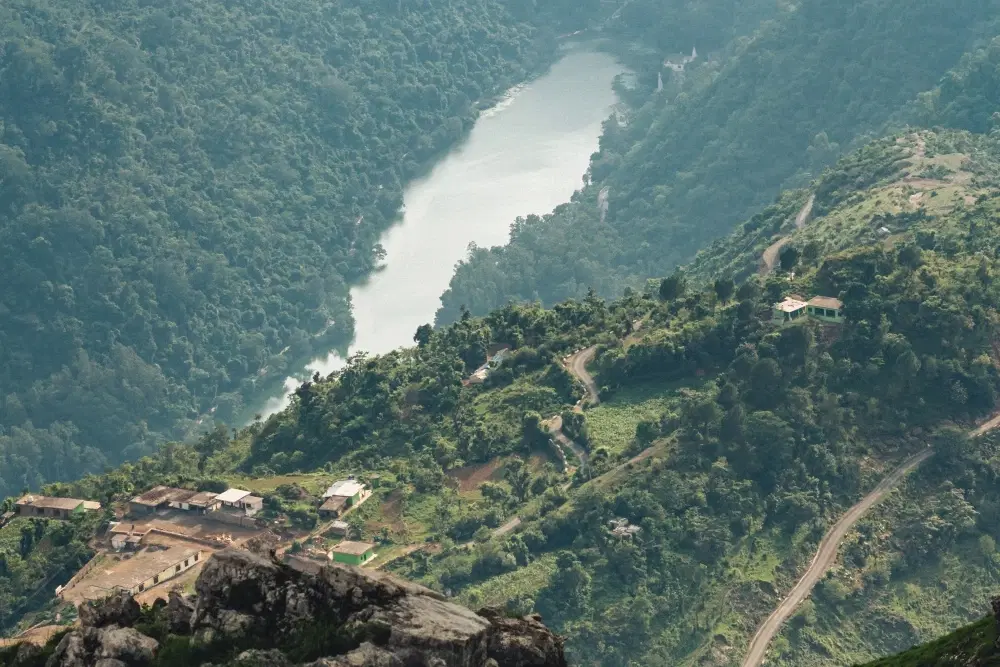
Flights
•04 min read

Valleys have long been the silent keepers of ancient stories, where winding streams and towering cliffs echo legends of love, loss, and magic. Over centuries, these natural amphitheaters have witnessed countless folk tales that blend mysticism, culture, and history, capturing the hearts of travelers and locals alike. In this blog, we explore FAQs about valleys with folk tales. You will discover the origins of these legendary valleys, learn about their cultural importance, and be transported into a realm where mythical valley stories meet real-world landscapes.
The geography of valleys—nestled between immense mountains or rolling hills—creates an atmosphere of mystery and seclusion. This isolation allows nature to take center stage, making every rustle in the wind or ripple in the stream a potential part of a long-forgotten tale. Additionally, valleys often serve as crossroads between different cultures, where diverse traditions and beliefs merge to form a rich tapestry of ancient valley folklore.
From love and betrayal to heroism and supernatural encounters, valley folk tales weave recurring themes that resonate across generations. Many tales feature star-crossed lovers, valiant heroes battling unseen forces, and enchanted beings that offer both wisdom and warnings. Such themes are not only universal; they conjure a deep connection to our shared human experience, echoing through valleys around the world.
India boasts a treasure trove of legendary valleys that have inspired mythical valley stories. In regions like Sikkim, the rivers Teesta and Rangit are celebrated in folk tales that paint them as star-crossed lovers whose union was disrupted by fate. Similarly, the valleys of Himachal Pradesh, such as those found in Kinnaur and Spiti, are steeped in rich oral traditions that speak of heroic feats, supernatural events, and age-old battles between good and evil.
Beyond India, valleys with folk tales continue to enchant the world. Japan's Sixteen-Men Valley, for instance, has legends of spectral figures and mysterious happenings that reflect the nation’s unique cultural heritage. Closer to home in the Valley of Flowers in Uttarakhand, local lore marries natural beauty with divine intervention, while the remote regions of Ladakh and the enigmatic Lohit Valley contribute distinct stories to the global collection of valley legends and myths.

For centuries, valley folk tales were passed down through generations by word of mouth, their meanings evolving with each retelling. This oral tradition not only kept the stories alive but also allowed them to adapt to the changing times. Recognizing the importance of these narratives, many of these ancient valley folklore pieces have now been documented in books and academic projects, ensuring that the wisdom embedded in these mystical valley tales is preserved for future generations.
In recent times, valley folk tales have taken on new forms, finding their way into modern media including films, books, and tourism campaigns. These adaptations have sparked renewed interest and have played a crucial role in cultural preservation. Through art and technology, the enchanting aura of valleys with folk tales continues to inspire audiences, offering fresh perspectives on timeless legends. This modern transformation not only revitalizes interest among younger audiences but also reinforces the relevance of ancient valley folklore in contemporary society.
Mystical beings such as fairies, ghosts, and other supernatural entities are common in valley folk tales. In one popular story, the Chandratal fairy is believed to protect the hidden treasures of a secluded valley, while another legend tells of the haunted house of Solan, where unseen presences whisper secrets of the past. These stories captivate the imagination, merging folklore with the allure of magical landscapes and otherworldly occurrences.
Beyond the surface of supernatural characters lies a deeper symbolic realm in valley legends. The mystical elements in these tales often represent the universal connection between spirituality and nature. Symbols like winding streams, towering cliffs, and ancient trees are not mere backdrops; they resonate with themes of rebirth, resilience, and the eternal cycle of life. These symbols strike a chord with audiences, making the folklore of valleys profoundly relatable across different cultures.

Did you know? Valley folk tales often serve as moral lessons, teaching values like courage, perseverance, and respect for nature. These stories transcend time, offering wisdom that remains relevant even in modern contexts.
Folktales include myths, legends, fables, fairy tales, tall tales, trickster tales, ghost stories, hero tales, animal tales, and pourquoi stories. Examples include the myth of Teesta and Rangit, the legend of Chandratal fairy, and the fable of the monkey patrol in Himachal Pradesh.
The story of Teesta and Rangit is a renowned folktale from Sikkim, depicting the rivers as lovers who were separated by fate.
Himachal Pradesh is known for tales like Malana’s superiority complex and the haunted house of Solan, which reflect the region’s rich cultural heritage.
Folktales often take place in natural settings like valleys, forests, mountains, and rivers, as these locations evoke mystery and connection to the earth.
In summary, valleys with folk tales offer a remarkable glimpse into the cultural soul of a region. These storied landscapes, rich with legendary valleys and mythical valley tales, continue to inspire both the wanderer seeking spontaneous adventures and the planner desiring a well-curated escape. By embracing both traditional and modern narratives, these stories remind us of our eternal bond with nature and the importance of preserving the past. Let the captivating folklore of valleys transport you to a world where every twist of nature sparks a new tale.